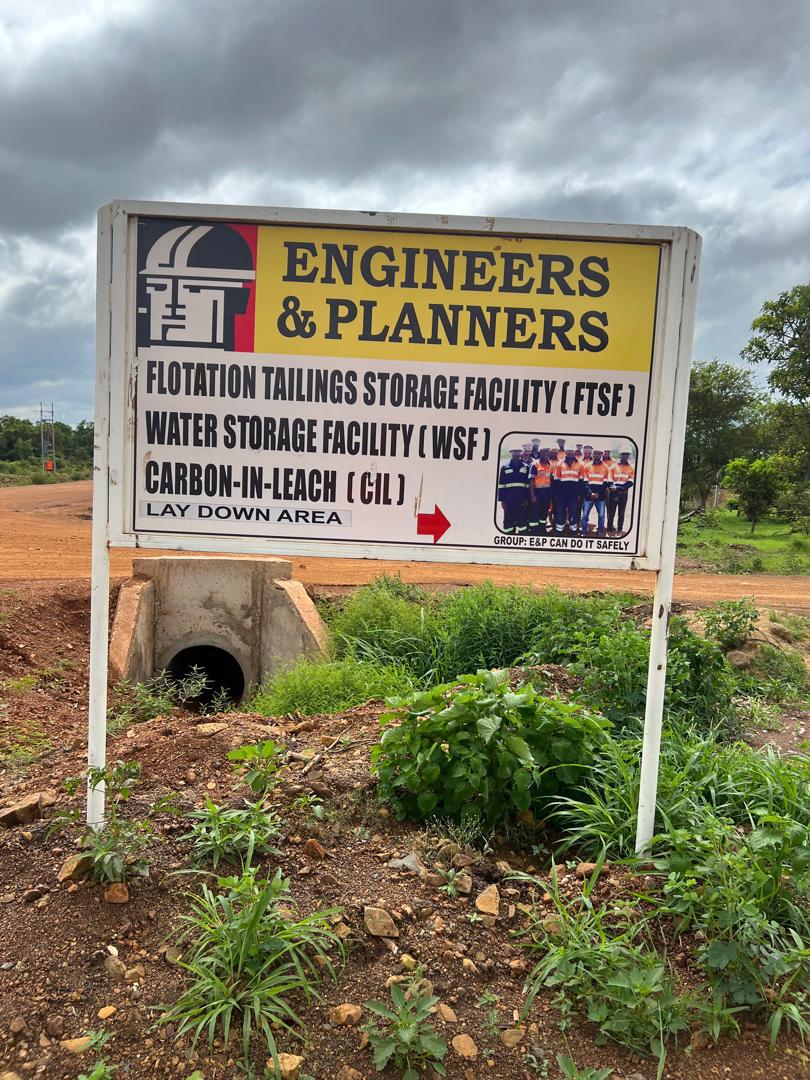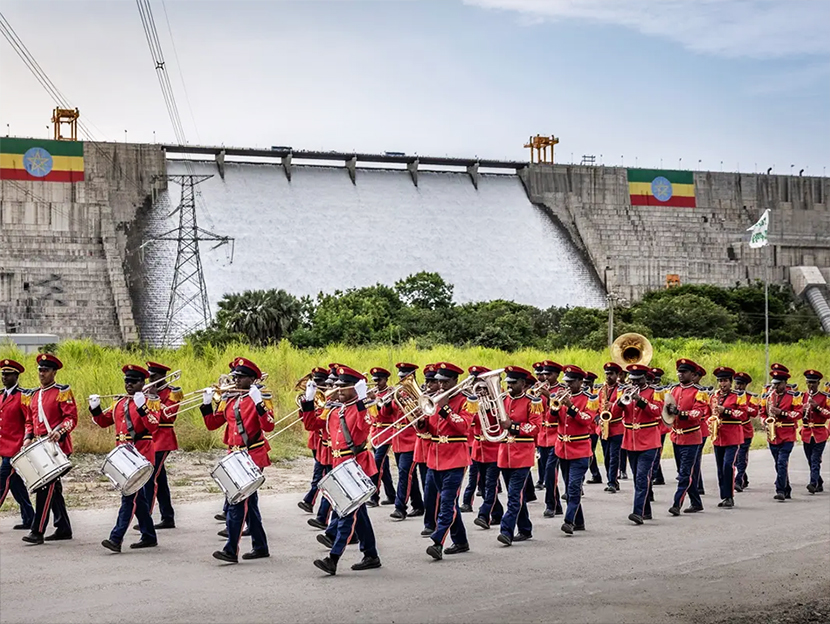Opinion: Youth Activist in mining congratulates Ghana for E&P Black Volta and Sankofa takeover
By Joshua Asaah
Copyright a1radioonline

As Engineers and Planners (E&P) prepare to start mining operations at the Black Volta and Sankofa gold projects after a successful takeover from Azumah Resources Ghana Limited and Upwest Resources Ghana Limited, many Ghanians are excited and in full support of the mineral resource regulators for facilitating the smooth acquisition of the two mines.
The mining sector is one of the sectors in Ghana’s economy that generates huge revenues for the government, and it is therefore expected to employ more Ghanaians in order to improve the livelihoods of its citizens, which will translate to a reduction in the poverty level in Ghana.
The acquisition of the two mines by Engineers and Planners is the rebirth of the industrial revolution of local content, fully felt in the mining sector. Is high time that, as Ghanaians, we should avoid politicizing the extractive industry when it has to do with Ghanaian ownership and monopoly, but rather encourage and promote Ghanaian investors who have the capacity and resources to carry out large-scale mining in the country. This step is in the right direction in the proper utilization of our natural resources, which will go a long way in developing every sector in the economy.
Engineers and Planners have shown remarkable competence and capacity in engaging in large-scale mining by serving as contractors and partners of renowned large-scale mining companies currently mining in parts of Ghana. The successes of these large-scale mining companies rest on the quality of services rendered by Engineers and Planners as a local content component.
The indirect job opportunities from the large-scale mining operations through Engineers and Planners exceed seven thousand Ghanaian mine workers, with an increase in household income.
The salaries and remuneration of workers of Engineers and Planners are appreciable, encouraging, and satisfactory as expected by the mining laws and regulations, as compared to what most of the foreign owned large scale mining companies give to Ghanaian workers as salaries and allowances.
According to the Ghana Chamber of Mines 2024 mining industry statistics and data, the Ghana Revenue Authority’s Direct Domestic Revenue for 2022 and 2023 was GHC 168,760,925.42 and GHC 267,984,838.83, respectively. The corporate tax collection was GHC 3,580,669,840.02 and GHC 7,473,901,316.64 for 2022 and 2023, respectively.
The data further reveals the payment of mineral Royalties of GHC 1,796,206,746 for 2022 and an amount of GHC 2,771,801,237 for the 2023 fiscal year. All these figures are a result of the contribution of Engineers and Planners in the large-scale mining industry.
Ghana has around 16 large-scale companies producing minerals, in addition to over 3,000 registered small-scale mining groups and 90 mine support service companies. The large-scale producers primarily extract gold, diamonds, bauxite, and manganese, while small-scale operations also contribute significantly, especially in diamond and industrial mineral production.
At the end of 2023, producing member companies of the Ghana Chamber of Mines directly employed a total of 12,674 people. This included 12,588 local employees and eighty-six (86) expatriates. Expatriates accounted for 0.7% of the industry’s direct workforce, while the remaining 99.3% were Ghanaians.
In 2023, mining companies invested a total of USD 804.894 million in capital expenditure for plant, machinery, and equipment, reflecting a decrease from the USD 913.569 million spent in 2022. This expenditure represented 13.7% of total mineral revenue for the year.
4.8 MERCHANDISE EXPORTS
Data from the Bank of Ghana shows that receipts from the export of minerals improved from US$6.8 billion in 2022 to US$7.8 billion in 2023. The 15 percent growth in mineral revenue was ascribed to the increase in proceeds from the export of all minerals, except manganese. Specifically, the receipts from the export of gold rose from US$6.6 billion in 2022 to US$7.6 billion in 2023, representing an increase of 15 per cent.
In turn, the upturn in receipts from gold exports was precipitated by a simultaneous increase in the yellow metal’s price and volume of export. The quantum of gold exports increased from 3.8 million ounces in 2022 to 4.1 million ounces in 2023, while the average price of gold rose from US$1,800 per ounce in 2022 to US$1,940 per ounce in 2023. Notwithstanding the elevation in receipts, the contribution of gold to total mineral revenue was unchanged at 96.9 per cent as of the end of 2024.
According to the Ghana Chamber of Mines ‘What You Pay Report’, producing member companies paid GHC 17.68 billion in fiscal contributions to the government. Out of a total mineral revenue of US$7.05 billion, companies returned US$4.99 billion, equivalent to 70.8 percent of Ghana’s economy in the form of direct payments, procurement, wages, and social contributions.
On corporate tax, a total of GHC 10.3 billion was paid by chamber member companies on their profit. Pay as you earn ( PAYE) for the 2024 fiscal year, the mining sector paid GHC 1.46 billion from the salaries of employees in the large-scale mining sector. It reflects the significant employment impact of the mining industry. With over 11,300 Ghanaians employed directly, the PAYE figure underscores the sector’s role in formal job creation and tax mobilization. With respect to dividends, the sector paid GHC 1.03 billion to the government, through its free-carried stakes in large-scale mining companies. These payments indicate that, as a shareholder in some mining operations, the state benefited directly from company earnings.
From the statistics outlined in this article, it is of passionate belief and resolve that the participation of Ghanaian owned companies in the mining value chain has contributed to the huge amount of money Ghana earned as revenues, royalties, and other payments. It is a fact based on the figures that the local content components in the large-scale mining in Ghana are important in the sector, and full participation or owning large-scale mining concessions will make a huge positive impact, as well as increasing government earnings in the extractive industry.
The bold step taken by Engineers and Planners in acquiring the Black Volta and Sankofa gold projects is a sign of Ghana’s control efforts in its natural resources, with a lot of Ghanaians, both residents in Ghana and abroad, developing interest in investing in mining projects.
Gilbert Asakipaam
Youth Activist in Mining and Construction
Upper East Region
A1Radioonline.com|101.1Mhz|Bolgatanga



